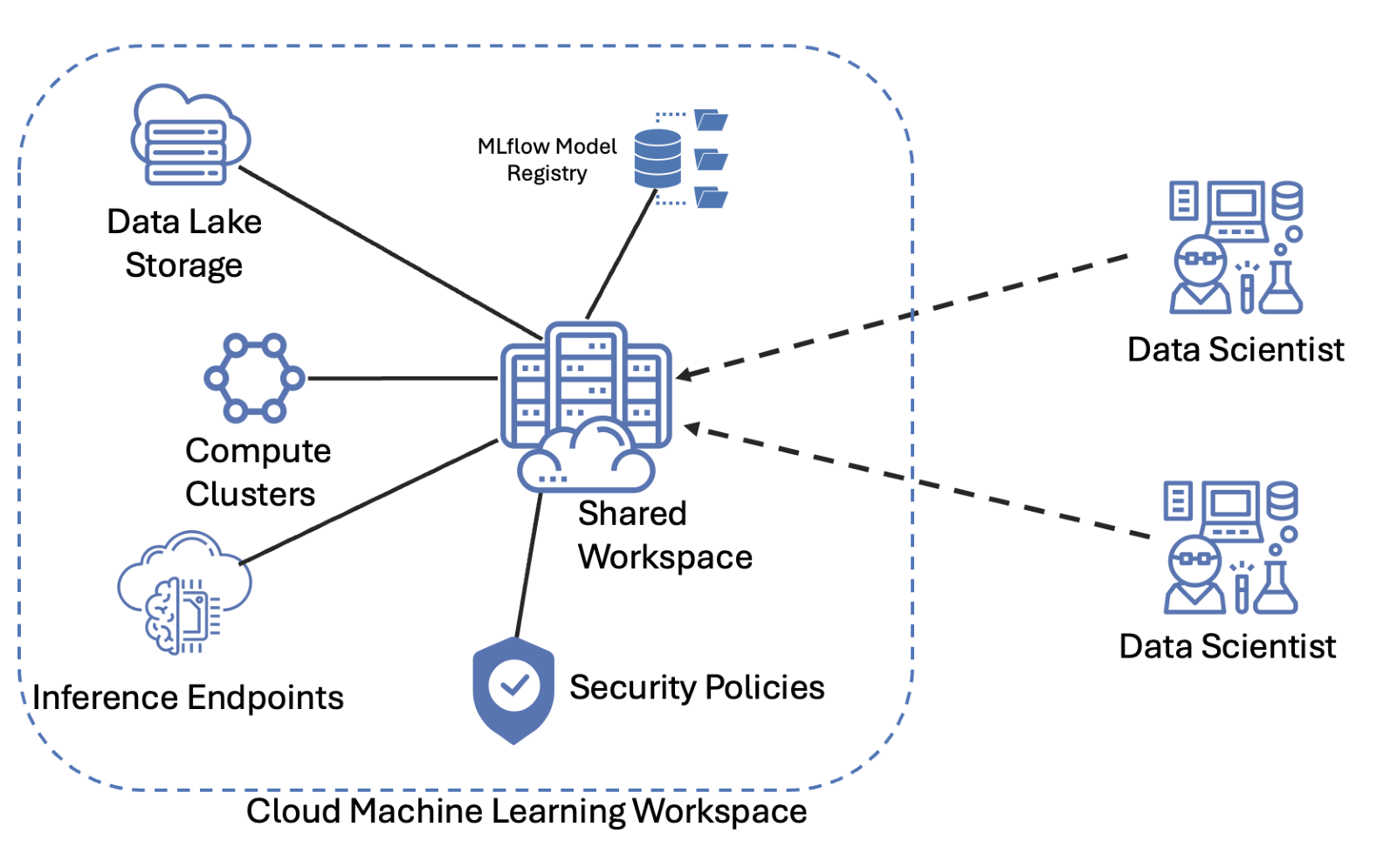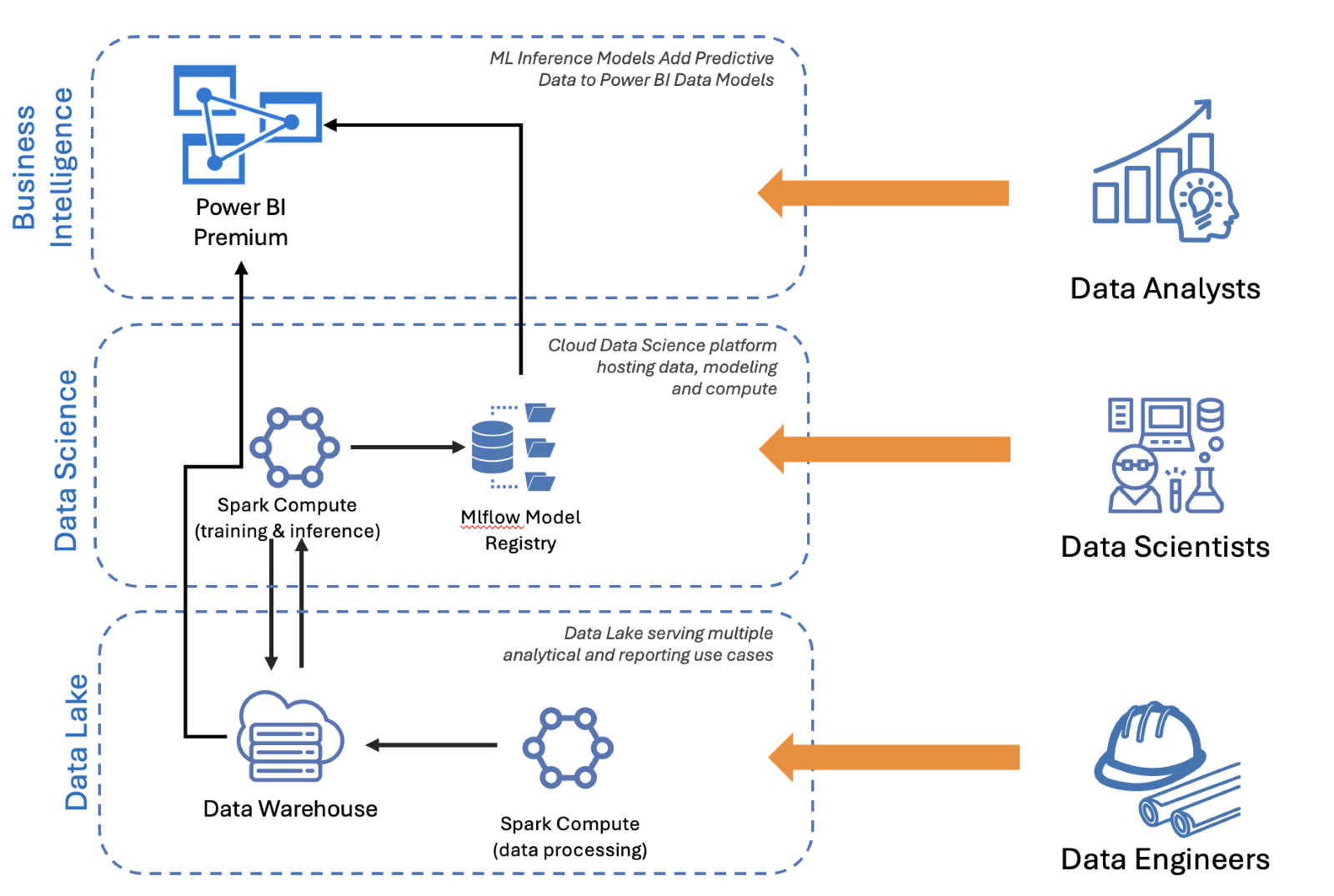
Harness AI And ML For Next-Gen Platform Strategies
Revolutionize Your Data Game With AI And ML Technologies
Leveraging AI and ML technologies no longer requires Ph.D.-level expertise and research departments. Virtually all tier-1, cloud-based data platforms provide access to these technologies in accessible and cost-effective ways. Here's Gartner's high-level overview of the Strategic Cloud Platform Services.
With the incorporation of AI and ML into data platforms, the availability of large language models as a service and increasingly available AI/ML expertise, the golden age of democratized advanced data analysis is here.
The Modern Data Platform
In the past, data warehouse efforts were primarily focused on analyzing rows and columns of data stored in relational databases. Most data warehouses 15 years ago focused on quantitative analysis of finance, sales and operational data that was difficult or impossible in highly normalized source ERP systems.
As data volume and SQL query complexity increased, newer purpose-built OLAP engines such as Microsoft Analysis Services and Hyperion Essbase came to the rescue—allowing us to analyze ever larger tabular data sets with sub-second query response times.
But adding semi-structured data (e.g. JSON and XML) and unstructured data (e.g. customer reviews) to data warehouses remained elusive. Most database technologies simply didn’t have the ability to process and store data that wasn’t formatted as rows and columns of text, numbers, and dates.
Today’s modern data platforms—such as Microsoft Fabric, Databricks and Snowflake—are built on a Data Lake architecture that provides analytical support for structured, semi-structured and unstructured data. These modern platforms incorporate Apache Spark compute clusters that continue to embrace SQL while adding the ability to include unstructured data processing using Java, Python and Scala code – providing virtually unlimited possibilities for advanced data analysis.
Figure 1 - Modern Data Platform
The AI-Enabled Data Platform
First-Tier cloud platform providers such as Microsoft, Amazon, Google, and IBM provide AI and ML services that can be integrated with their respective modern data platform architectures.
Today, we can integrate AI/ML models into data processing pipelines to add insight never before possible using traditional SQL and OLAP approaches. Often, AI/ML modeling and processing utilizes the same Apache Spark compute engines used by data engineers in data lake architectures—making adoption of AI technologies in a modern data platform straightforward.
Figure 2 - Modern Data Platform Incorporating Data Science Workloads
A modern data platform augmented by a Data Science layer provides many opportunities to incorporate AI and ML models to create new ways to
A modern data platform augmented by a Data Science layer provides many opportunities to incorporate AI and ML models to create new ways to analyze data and enhance the ROI of current data platform investments.
Creating Insights with AI In A Modern Data Platform
Artificial Intelligence techniques provide new ways to analyze and interpret data and new ways to refine unstructured data for use by familiar structured data analysis tools. For example, using AI Language models, a data platform can provide language translation, sentiment analysis and anomaly detection.
Modern platforms like Microsoft Fabric include access to AI Models, and open new possibilities:
- Incorporate semi-structured and unstructured data into Business Intelligence dashboards.
- Leverage Generative AI Large Language Models, such as Microsoft Open AI Services and Google Gemini to enrich understanding of traditional Semantic Data Models
- Enrich data with AI Language models, for example sentiment analysis and language translation.
Enabling Advanced Analysis with ML
Proven Machine Learning Techniques like demand forecasting and customer segmentation have long been used in many organizations to help managers extract understanding from data that traditional BI methods can’t provide alone.
Now, with Machine Learning technologies fully integrated with modern data platforms, data scientists can incorporate ML Models directly with Data Lake architectures. In a modern data architecture ML Models can be directly accessed by data processing pipelines, BI Tools and custom applications via Inference Endpoints.
Figure 3 - Power BI Dashboard Enhanced with AI Models
With an integrated Data Science strategy, Machine Learning becomes in integral part of the Power BI and reporting experience, helping business users analyze data and make better decisions. 
Figure 4 - Data Science in a Modern Data Platform
Power BI With ML Models For End-User Predictive Analytics
With Machine Learning incorporated with data pipelines in a data lake architecture, new opportunities are available for incorporating sophisticated techniques to develop, leverage and evaluate machine learning models.
In this example, a Microsoft Power BI visualization incorporates ML-generated measures, making predictive analytics easily accessible to business users within the familiar dashboard tools they’re used to!
Cloud-Based Machine Learning, Artificial Intelligence And Generative AI Platforms Are Here
Data Analytics platforms have experienced a steady evolution from their roots as relational, SQL-based query and reporting platforms 20 years ago to the rich, multi-faceted modern analytical platforms available to organizations of any size today.
With the introduction of affordable, cloud-based Machine Learning, Artificial Intelligence and Generative AI platforms, more and more companies are leveraging advanced techniques and technologies to provide insight, improve operational efficiencies, and develop competitive advantages in competitive markets.
Rob Kerr is VP, Artificial Intelligence at DesignMind.
Figure 5 - Power BI Visualization Incorporating ML Forecasting Model
Learn about our AI and Data Science solutions, including AI Strategy and Roadmaps, Machine Learning and AI Model Development, and Large Language Models (LLM).

